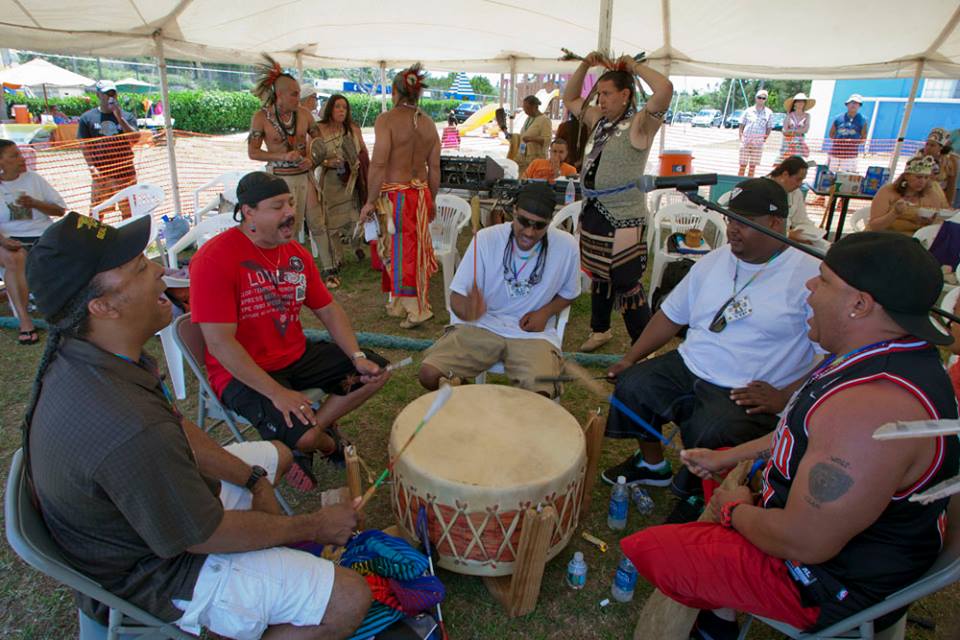 A drum group at the annual Bermuda Pow Wow. Photo from Bermuda Sun / Facebook
A drum group at the annual Bermuda Pow Wow. Photo from Bermuda Sun / Facebook
How many Native Americans were enslaved in the last 500 hundred years? History reporter Rebecca Onion helps bring some clarity to the question in a cover story for
Slate.
Brett Rushforth, the author of
America's Original Sin: Racism, White Privilege, and the Bridge to a New America
,
believes between 2 million to 4 million indigenous people were enslaved in the Americas. While that's not as large as the 10 million Africans who were brought as slaves, he argues that it represents a significant segment of the slave trade.
“If you go up to about 1680 or 1690 there still, by that period, had been more enslaved Indians than enslaved Africans in the Americas," Rushforth tells Slate.
Onion provides several examples of the trade. Apaches and other Plains tribal members ended up in the Caribbean after being sold in present-day Canada, she reports.
“There were Plains Apaches who showed up on sugar plantations in Martinique,” Christina Snyder, the author of
Slavery in Indian Country: The Changing Face of Captivity in Early America
, tells Slate.
The Caribbean was also the destination for Pequots and Wampanoags who were sold into slavery following
King Philip's War in the 1600s. Members of the
Mashantucket Pequot Tribal Nation of Connecticut and the
Mashpee Wampanoag Tribe of Massachusetts still maintain ties to Bermuda, where some of their descendants live. An
annual powwow celebrates those ties.
In an interactive feature, Rushforth Andrew Kahn of Slate catalog the names of 1,200 Indian people who were enslaved between 1660 and 1670. That represents about 10 percent of the estimated 10,000 Indians who were forced to work on farms, in homes and on construction projects in
New France, a vast territory that includes parts of present-day Canada and the U.S.
Get the Story:
Rebecca Onion:
America’s Other Original Sin
(Slate 1/18)
Brett Rushforth and Andrew Kahn:
Native American Slaves in New France
(Slate 1/18)
Join the Conversation

